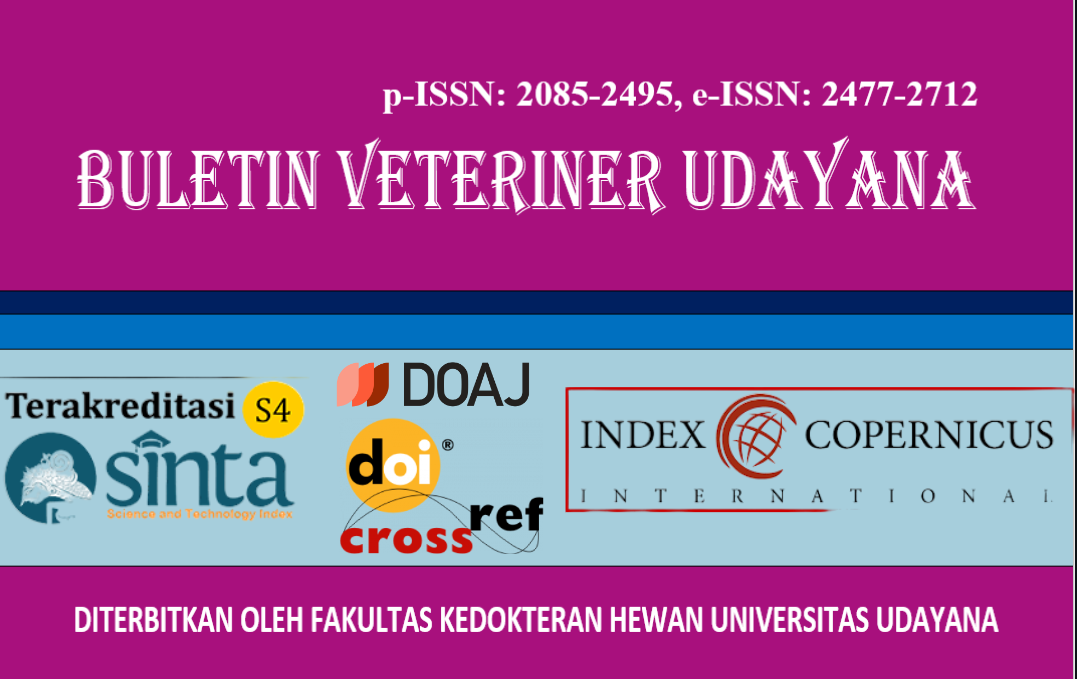PREVALENCE OF PARAMPHISTOMUM SP. INFECTION IN MUD BUFFALO USED IN THE MAKEPUNG TRADITION IN JEMBRANA DISTICT
DOI:
https://doi.org/10.24843/bulvet.2025.v17.i05.p06Keywords:
Prevalence, Paramphistomum sp., Mud Buffalo, Jembrana.Abstract
Mud Buffalo (Bubalus bubalis) is a livestock that plays a role in the economy, social and cultural community, especially in Jembrana Regency, Bali. This study aims to determine the prevalence of trematode worm infections, especially Paramphistomum sp. worms, in Mud Buffalo (Bubalus bubalis) used in the makepung tradition in Jembrana Regency. The study used an observational cross-sectional method. The sample used in this study was fresh feces with a total sample of 120 buffaloes collected from three sub-districts, namely Negara, Melaya, and Mendoyo. Sample testing was carried out at the Parasitology Laboratory, Faculty of Veterinary Medicine, Udayana University using sedimentation and Parfitt and Banks methods, then the data were analyzed using the Chi-square test. The results showed the prevalence of Paramphistomum sp. in mud buffalo was 8.33% (10/120). The Chi-square test showed that the risk factors of region, age, and maintenance management (stall system, type of stall floor, and stall cleanliness) in the statistical test had no relationship (P>0.05) with the prevalence. Meanwhile, the feed source category had a significant relationship (P<0.05). This study is can provide scientific information on the prevalence of Paramphistomum sp. infection as a basis for controlling parasitic diseases in Makepung buffalo in the Jembrana region.




